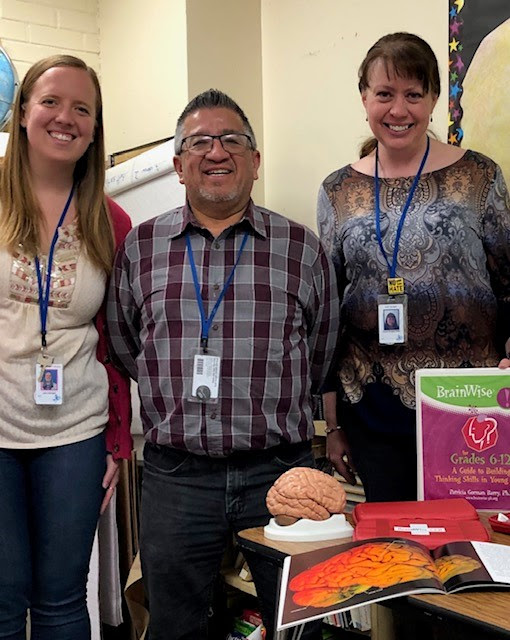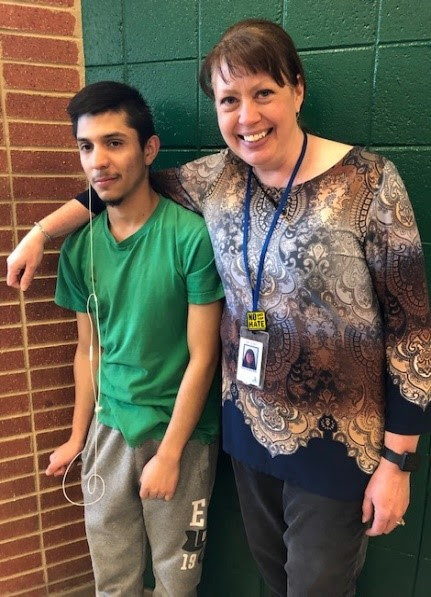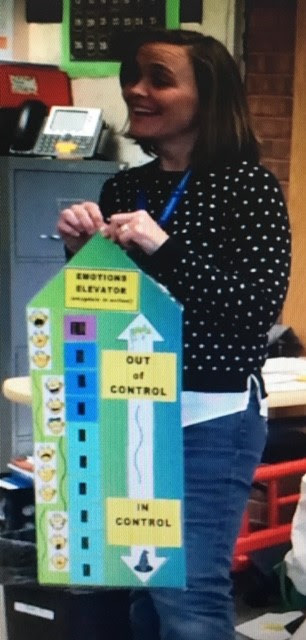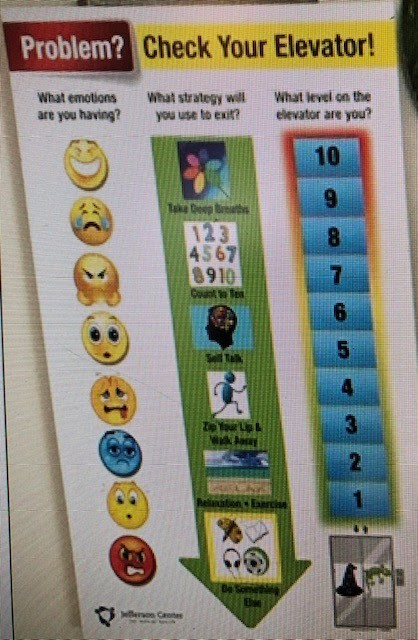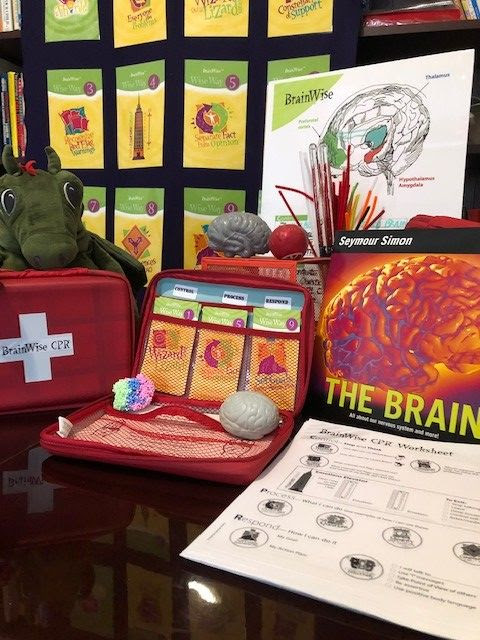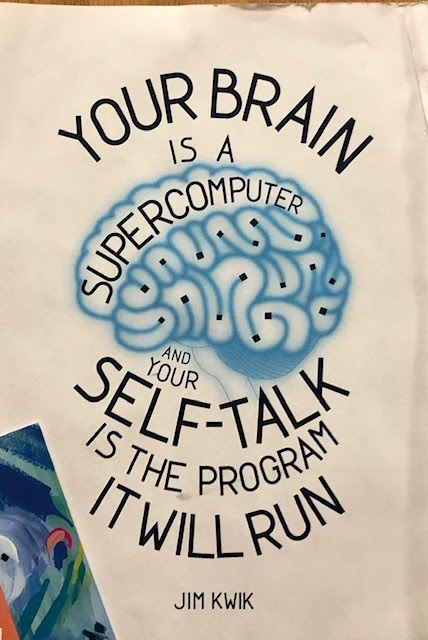Brain Zone in a Classroom for Exceptional Teenagers
Posted On: March 14, 2020
|
|
 |
|
School psychologist Karyn Singley Blair with some of her BrainWise tools
|
 |
The 2200 students who attend Colorado’s Aurora Central High School come from over 40 countries and speak more than 50 languages. Many students are refugees and will be the first in their families to graduate from high school. School psychologist Karyn Singley Blair has been a BrainWise instructor at the school for more than 15 years. She also has trained countless graduate student interns to teach BrainWise to some of the most vulnerable students – adolescents with special needs.
Karyn’s innovative teaching strategies include integrating the 10 Wise Ways into game shows like Jeopardy!, creating a tactile brain from yarn for a blind student, and making a realistic brain out Jell-O.
 |
|
 |
Stop and Think Red Flag
|
This year, she received a grant from Denver Mile High Rotary to place a Brain Zone in a classroom.
Students know that a Brain Zone is a space where they can go to stop and think and may give an adult the hand brain “stop and think” gesture to signal when they need to use it. They follow rules set by the staff and choose a tool/activity they find helpful. Many students use the Brain Zone for a short break and additional help is available for those who may need more assistance.
Brain Zone Users Demonstrate “First Response Skills.” Students who use the Brain Zone recognize that their internal red flags are a warning that they are going up their Emotions Elevator. This pre-emptive action indicates that they recognized potentially explosive behaviors. Additionally, they are using Wizard Brain thinking and their
Constellation of Support (The Brain Zone and their teacher) to help them manage the problem.
Examples of Emotions’ Elevators
|
Sarah Hays holding her classroom Emotions Elevator
|
|
|
|
Another example of a classroom Emotions Elevator
|
|
|
|
|
Karyn’s Braille Emotions Elevator
|
|
|
|
|
BrainWise Emotions Elevator
|
|
BrainWise CPR Tools for Brain Zones
When students are in the Brain Zone, they can choose an activity or activities to lower their
Emotions Elevator and process the problem. Brain Zones contain Emotions Elevators made by students or instructors and/or hang posters or pictures of
Wise Way #4 “Exit the Emotions Elevator.” Students can select from a menu of tools that help them exit their elevators, including BrainWise CPR cards and worksheets, brain manipulatives and sensory calming items (squeeze balls, aroma therapy, music, breathing exercises, mindfulness activities, weighted lap blanket, etc.)
|
|
|
Brain Zone with 10 Wise Ways’ Tools
|
|
|
|
|
Exit the Emotions Elevator using Self-Talk
|
|
Karyn primarily works with special needs students but she is recognized by the faculty and student body for her tireless advocacy for all students.
|
|
Julie Albright, school psychology intern, Rodney Fernandez, Intensive Learning Center teacher and Karyn Singley Blair, School Psychologist
|
She not only seeks innovative ways to integrate BrainWise into students’ lives, she applies the concepts to other programs which she sponsors including Challenge Day and Be the Change. This national program uses a large group workshop to inspire youth to stop and think about other people’s problems and be a positive and compassionate change maker. Karyn also is involved with ACHS’s Young Rotary Club and is working with the club’s school sponsor, Casey Maphis, to introduce a Brain Zone for use by the student population.
It is uplifting to be surrounded by educators and health professionals who dedicate their lives to helping others. They know the difficult circumstances and heartbreaking histories of their students and are dedicated, like Karyn, in their efforts to help them. Their students know that have a double line in their constellation of support and that these adults are a source of safety. I experienced this when one of Karyn’s students approached her in the busy student Commons Area as she was walking me out of the school. She welcomed him, placed an arm around him, and introduced me as the teacher who wrote about the Wizard Brain. He shyly shook my hand and smiled.
Please follow and like us:


